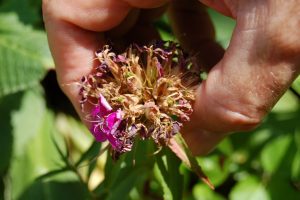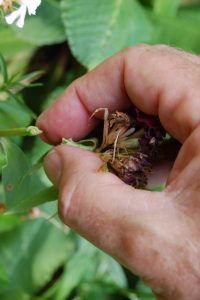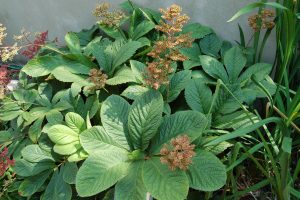Removing spent blossoms from your shrubs and garden flowers can be tedious work, but often pays big dividends. The removal of spent flowers is often referred to as “deadheading.”
Pinching or pruning off dead flowers is not just a matter of aesthetics – it can also encourage additional blooming. Many plants – petunia, geranium, marigold, speedwell, and coreopsis, among them – will re-bloom after deadheading. For these plants, the formation of fruit and seed signals the plant to stop flowering, since its job of reproducing through seed has been accomplished.
For species that do not repeat bloom, preventing fruit and seed formation is still good practice, as it allows resources to be spent on root and foliage growth and development of flower buds for next year.
Many faded flowers can simply be pinched off, while some need to be cut off with a knife, scissors or pruning shears. Mix the trimmings into your compost pile.
On the other hand, spent flowers and fruits of some plants are part of the overall ornamental character, such as viburnum, money plant and hydrangea. Deadheading of such plants can be delayed until they become unattractive.


